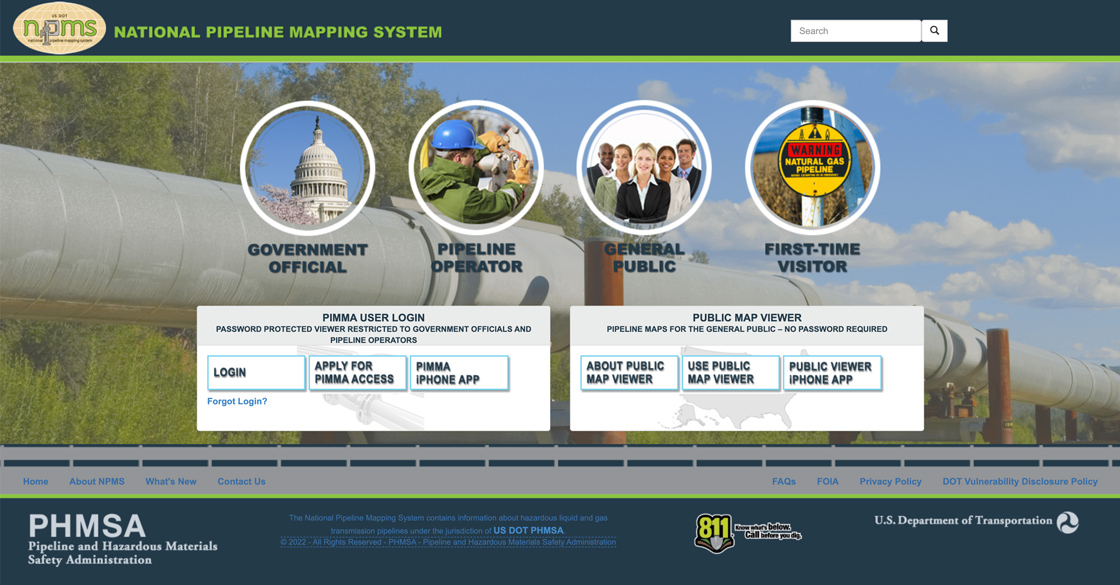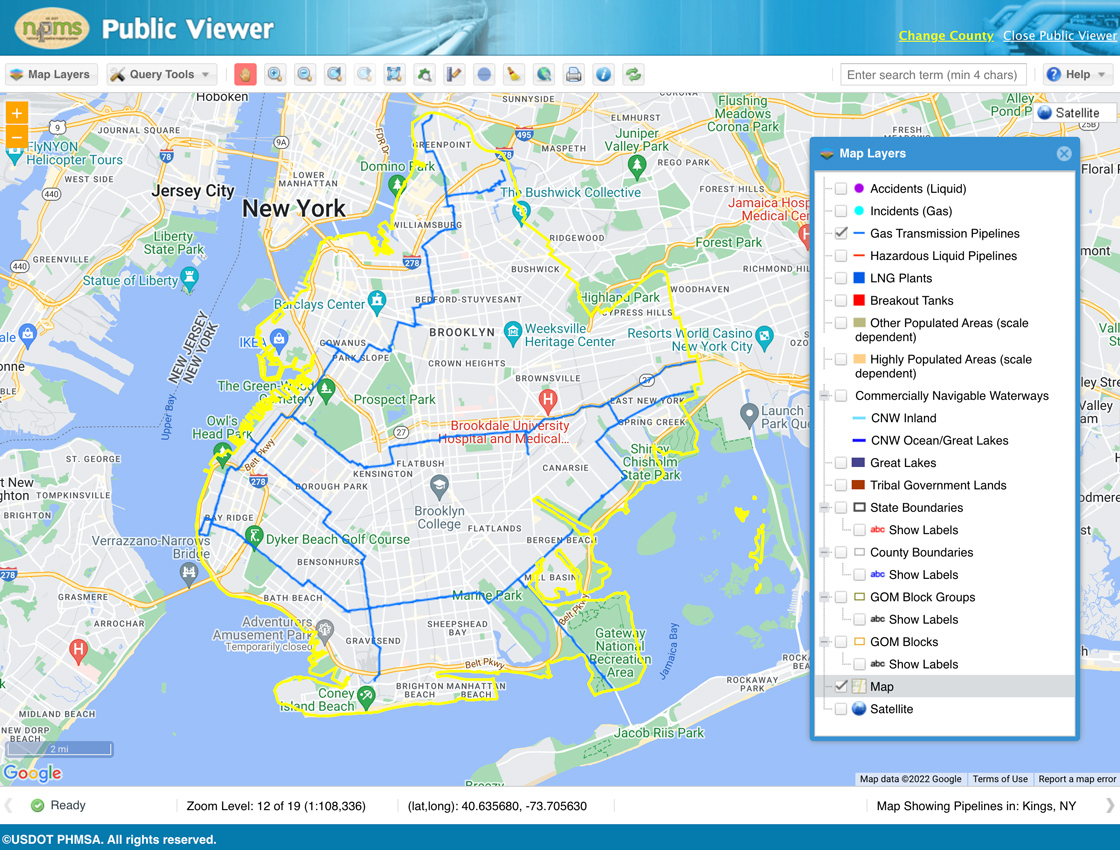| Nearly 2.6 million miles of natural gas pipelines lie beneath our nation’s surface. About 2.3 million of those miles are the natural gas distribution lines that carry gas throughout our cities and to our homes. Another 300,000 miles are natural gas transmission pipelines. Transmission pipelines transport large volumes of natural gas at high pressures, often over long distances, delivering processed natural gas to towns and cities where it will be used. |
| Because these pipelines do their jobs day after day quietly, reliably and efficiently, they go largely unnoticed and unconsidered by the public. But damage to natural gas transmission pipelines can cause dangerous leaks that have the potential to ignite or explode. As a first responder, it is vital that you know the location, size and contents of the large pipelines that may cross your jurisdiction. In an emergency, knowing and understanding the hazards posed by these pipelines will help you save lives and property. |
How do you learn about the pipelines in your area and what they contain?
|
Pipeline markers are the most general indicators.
Many pipelines are underground in public areas. High-visibility markers with National Grid’s 24-hour emergency phone number indicate the general location of our high-pressure natural gas transmission pipelines. These markers are usually freestanding; in urban areas, they may also be found on utility poles. |
| National Grid, like all natural gas transmission pipeline operators, is required by law to post pipeline markers that show the operator’s emergency contact information and the contents of the pipeline. For security reasons, the markers do NOT reveal the exact depth or location of the pipeline or the number or size of pipelines present. |
| The National Pipeline Mapping System is more specific.
You can learn the general location of natural gas and hazardous liquid transmission pipelines that cross your jurisdiction from the National Pipeline Mapping System (NPMS) at https://www.npms.phmsa.dot.gov. NPMS is administered by the National Pipeline and Hazardous Materials Safety Administration (PHMSA), which is part of the U.S. Department of Transportation. |
 |
| For specific pipeline locations, first responders can register with the Pipeline Information Management Mapping Application (PIMMA) at https://www.npms.phmsa.dot.gov. An iPhone app is also available. |
NPMS is a web-based mapping application, featuring data related to hazardous liquid and natural gas transmission pipelines, liquefied natural gas plants and break-out tanks (a type of storage tank). It’s important to note that NPMS does not include distribution lines or gathering pipelines that transport gas from wells to processing plants. |
Even a quick glance at the Public Map Viewer portion of the NPMS website (open to anyone) reveals that natural gas transmission pipelines traverse nearly every county in the country. The scale at which pipelines are visible on the public maps is restricted. Pipelines shown on the public maps disappear as you zoom in past a certain point as a security precaution. Under “About Public Map Viewer,” you can “Find Who’s Operating [Pipelines] in Your Area,” including contact information and often a website for more information about the company’s pipelines and their contents. |
 |
Use the Pipeline Information Management Mapping Application for the greatest detail.
For more detailed maps or to request GIS data layers to use in your own mapping system, federal, tribal, state and local officials (including all first responders) can apply for access to the Pipeline Information Management Mapping Application (PIMMA), also at https://www.npms.phmsa.dot.gov. PIMMA can serve as an essential tool in preparedness planning for catastrophic natural gas and hazardous liquids pipeline emergencies. It shows the same information that is available on the Public Map Viewer, but the scale is not restricted, so first responders can identify the exact location of pipelines in their communities. Pipeline operators are required to update their pipeline information with PHMSA annually. |
Access to PIMMA is restricted, and the applicant’s relationship to an authorized organization is investigated. For the sake of pipeline security, PHMSA requires applicants to agree not to share their account information or redistribute the information they derive from PIMMA maps. Multiple users from your department may apply for access. |
At National Grid, we want to help you prepare for natural gas emergencies. Visit our First Responder Utility Safety Website for more information about gas transmission pipelines and to learn essential response tactics for natural gas leaks, fires and explosions. |
Keep yourself, your team and the public safe this spring.
Visit firstresponder.ngridsafety.com today to register and
complete your utility safety training. |